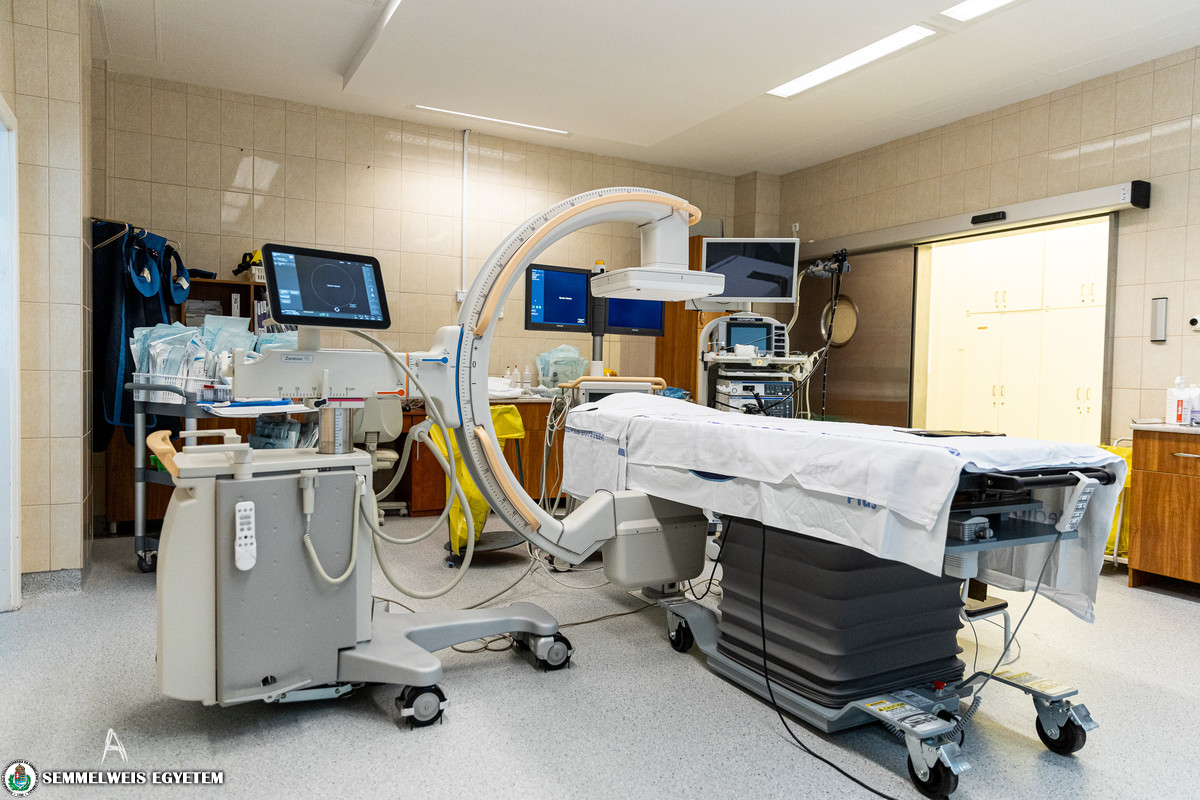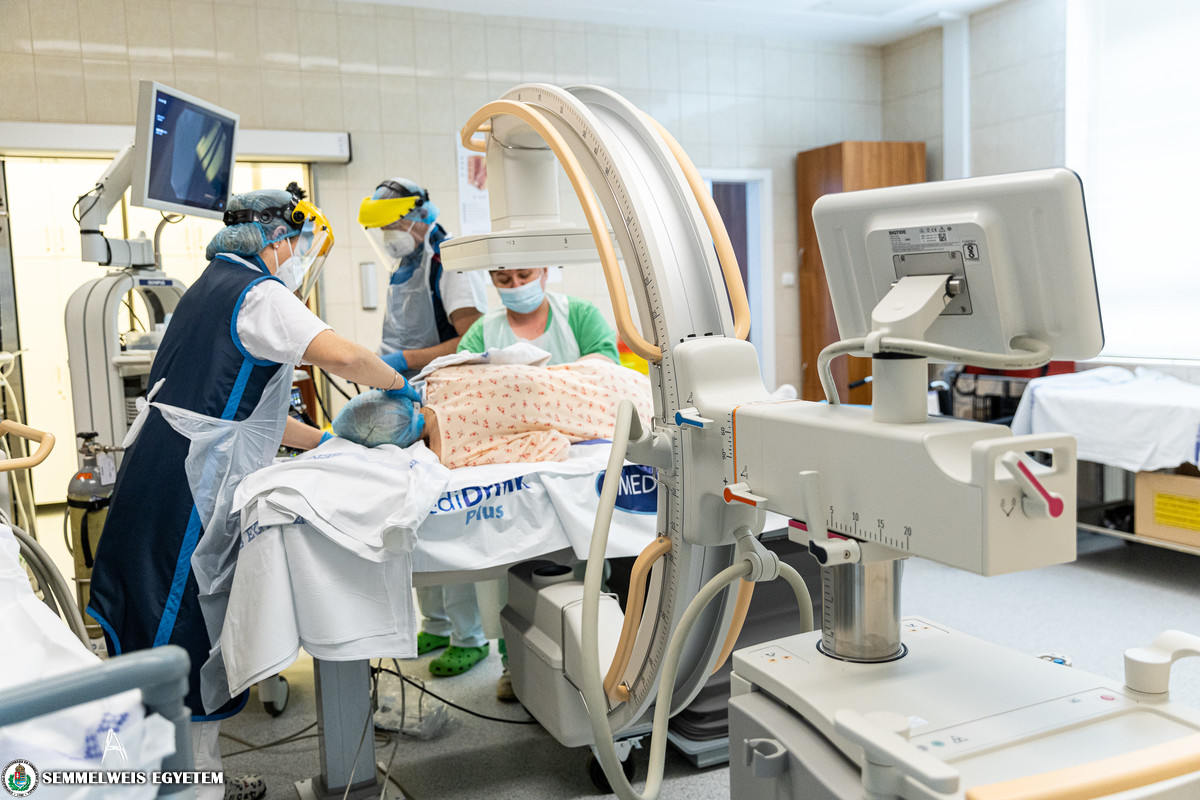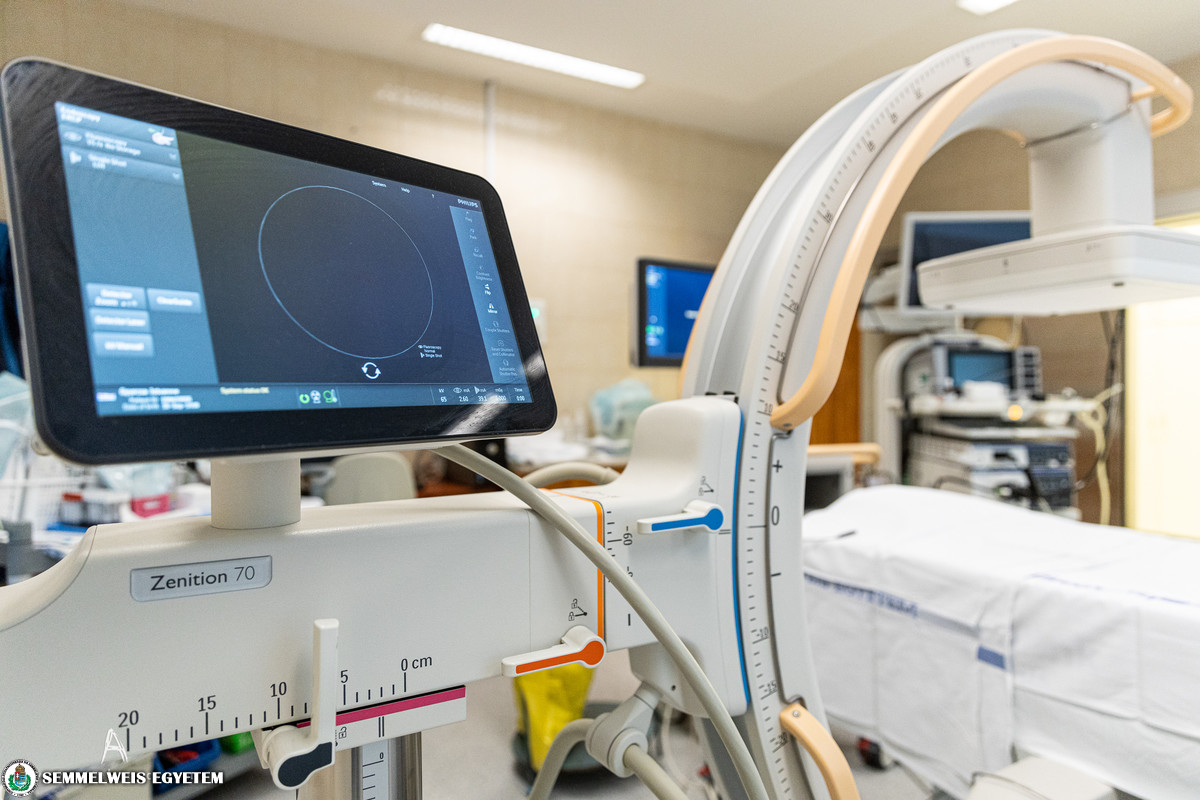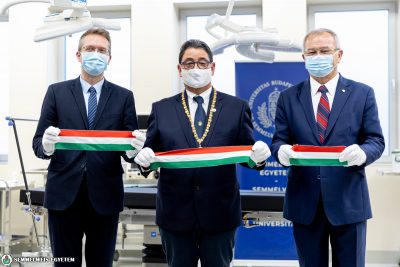The examination room of the Invasive Endoscopic Center at the 1st Department of Surgery and Interventional Gastroenterology has been equipped with a new type of C-arm X-ray machine and a motorized examination table. The electrical system of the examination room has also been renovated.
The examination room of the Invasive Endoscopic Center at the 1st Department of Surgery and Interventional Gastroenterology has recently been renovated. Thanks to the developments, a modern, C-arm X-ray machine by Philips has been installed, which is suitable not only for extremity angiography, but also for endoscopic and percutaneous interventions. In addition, the examination room has been equipped with a mobile, motorized examination table with lifting and tilting functions, therefore it may be used for contrast swallow examinations, too.
In the newly renovated examination room, palliative treatment of surgically inoperable abnormalities may also be implemented. Palliative treatments, such as endoscopic dilation or self-expandable esophageal-, duodenal-, and colonic metal stents, alleviate the patient’s symptoms and improve the quality of life without altering the course of the disease. Bile duct endoscopy requiring X-ray imaging (endoscopic retrograde cholangiopancreatography, ERCP), which is nowadays applied almost exclusively for operational purposes, may be performed on a daily basis in the renewed examination room. This procedure allows the removal of bile duct stones, the cytological sampling of the bile and pancreatic duct, the drainage of bile and pancreatic juice and the dilation of stenoses. With the help of endoscopic ultrasound (EUH), which is the standard screening method used in the diagnosis and staging of bile duct and pancreatic diseases, minimally invasive surgical interventions may also be performed that combine endoscopic imaging with ultrasound and X-ray imaging. These complex interventions require a high level of expertise and can be performed in case of emergency and on the basis of prior appointment. 4-5 such examinations can be performed per day at the institution.
The developments were financed by resources allocated for the establishment of the gastroenterology unit and include the complete renovation of the floor as well as the development of the electrical system required for the machines and devices.
1st Department of Surgery and Interventional Gastroenterology
Photo: Attila Kovács – Semmelweis University
Translation: Katalin Illés-Romhányi






